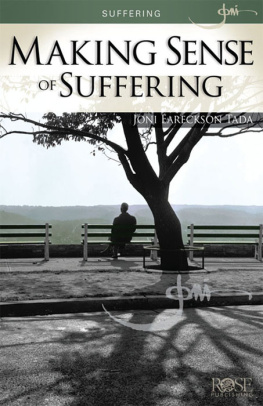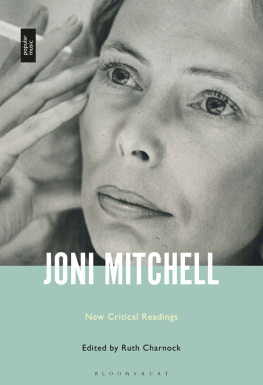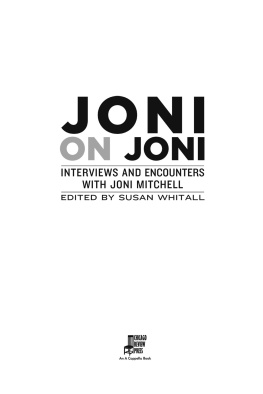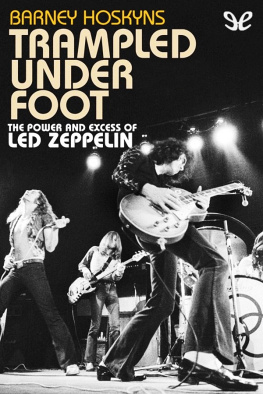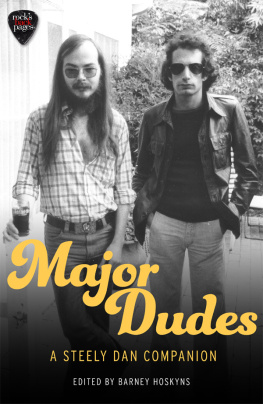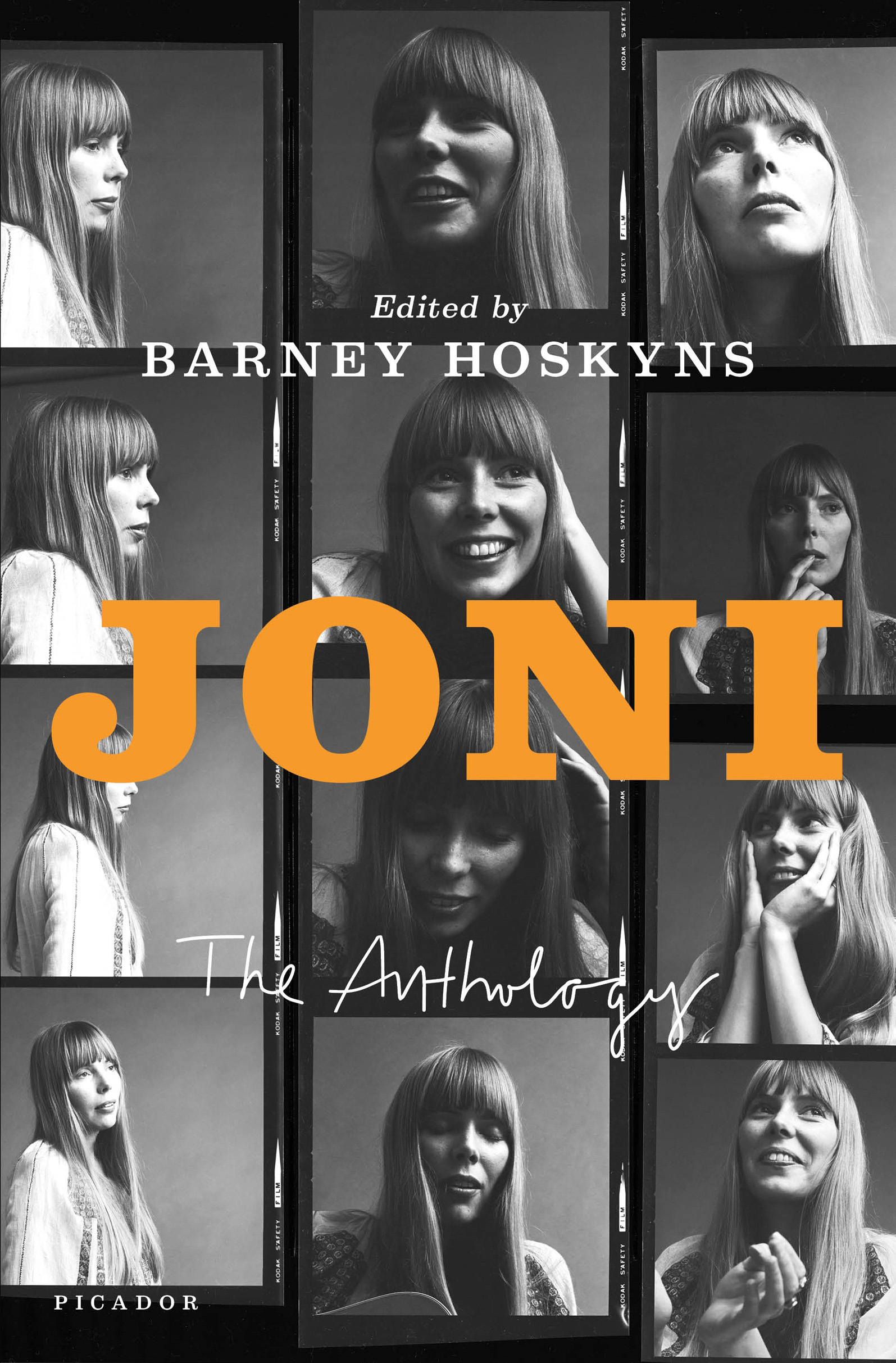Contents
Guide
Pagebreaks of the print version
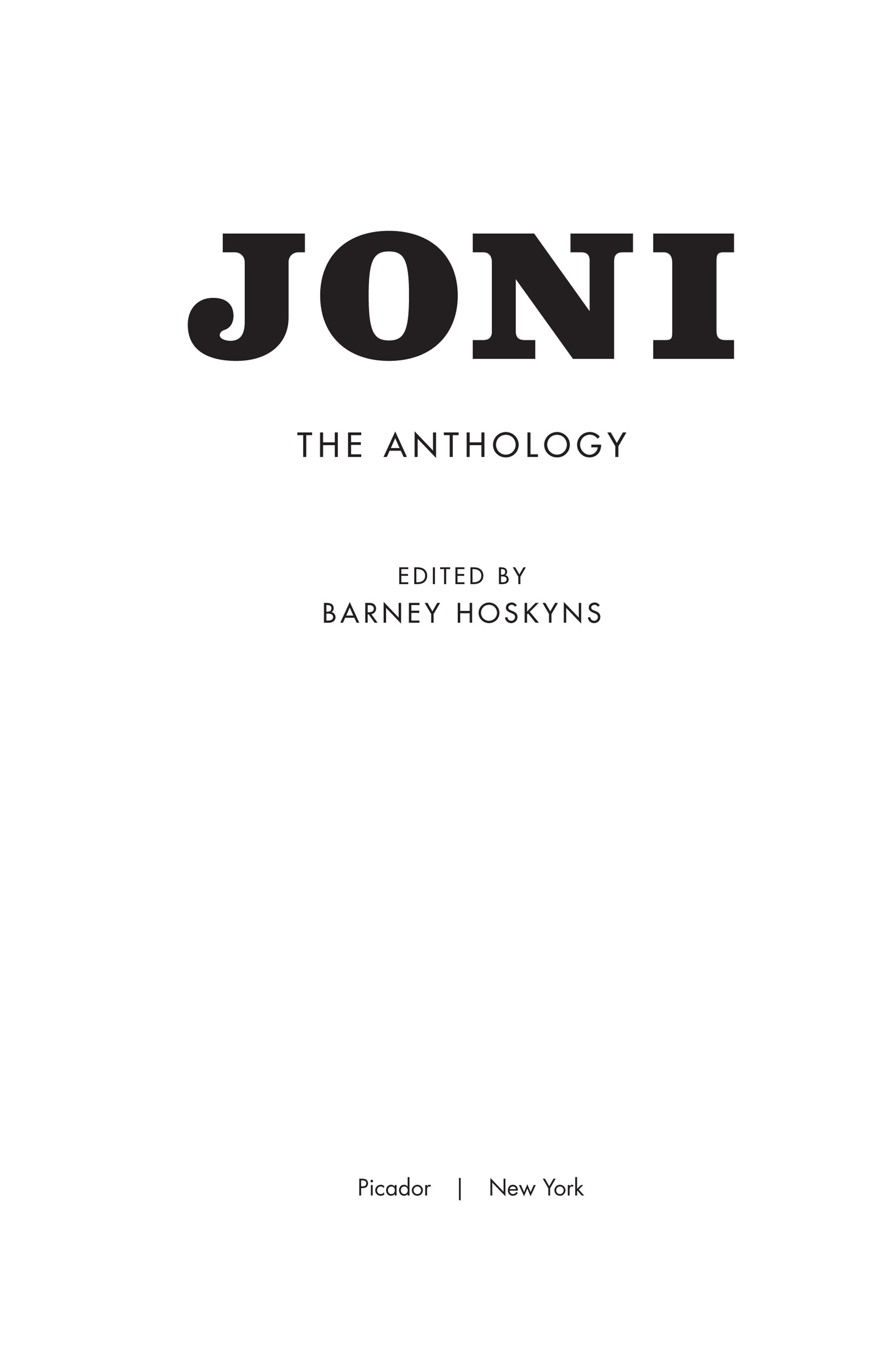
The author and publisher have provided this e-book to you for your personal use only. You may not make this e-book publicly available in any way. Copyright infringement is against the law. If you believe the copy of this e-book you are reading infringes on the authors copyright, please notify the publisher at: us.macmillanusa.com/piracy.
With thanks to Andreas Campomar, Lucian Randall and Claire Chesser at Little, Brown, and to Matthew Hamilton and Matias Lopez-Portillo at Aitken Alexander Associates. To my Rocks Backpages colleagues Mark Pringle and Tony Keys for sourcing the articles. Also to Debbie Paitchel at Wenner Media for her assistance with the Rolling Stone articles. And last but most to all the contributors to Joni : Loraine Alterman, Colman Andrews, Jacoba Atlas, Johnny Black, Caroline Boucher, Stephen M. H. Braitman, Mick Brown, Geoffrey Cannon, Barbara Charone, Martin Colyer, J. D. Considine, the late Karl Dallas, Dave DiMartino, Ian Dove, Robin Eggar, Todd Everett, Helen Fitzgerald, Ben Fong-Torres, Jerry Gilbert, The Writer Formerly Known As Betty Page (Beverley Glick), Fred Goodman, Michael Gross, Nicholas Jennings, Mark Kemp, Larry LeBlanc, Gerrie Lim, Kristine McKenna, Stuart Maconie, John Milward, Tom Nolan, Ian Penman, Sandy Robertson, Wayne Robins, Steven Rosen, Ellen Sander, Joel Selvin, Paul Sexton, Ben Sidran, Dave Simpson, Wesley Strick, Adam Sweeting, Frank Tortorici, Jaan Uhelszki, Michael Watts, Susan Whitall, the late Paul Williams, Richard Williams and Dave Zimmer.
On the afternoon I interviewed her in September 1994 (see ), Joni Mitchell was in the most infectious of moods: giggly, garrulous, bordering on flirtatious. When we were done talking, she hammed it up for the photographer on the street, just around the corner from her manager Peter Ashers office on West Hollywoods Doheny Drive.
Ive always felt privileged to have met this genius of North American music, this Canadian prairie maid turned folk poetess turned canyon confessor turned jazzbo hybridiser turned well, never mind the many shapes Mitchells shifted over half a century. Lets just agree shes peerless and untouchable as a singer-songwriter of intricate lyrics and swoopingly beautiful melodies.
Her words and her weird chords you can read about at length in the pieces pulled together in this compendium. Included in Joni are some of the most open and thoughtful interviews Mitchell has ever given, as well as some of the finest snapshots of her complex, often spiky personality. Here are reviews of (almost) all her albums the consensus masterworks, the curates eggs and of live appearances shes made in tiny clubs and glitzy concert halls. Here are the words of writers whove fallen, as I did, under the spell of her piercing honesty, her tingling musical intimacy, her coolly nuanced moods: Americans and Brits alike, men and women who know how uniquely brilliant she is.
Some would say Mitchell has been her own worst enemy has too often bitten the journalistic hands that stroked her. I choose to think shes struggled to bear the weight of her talent and intelligence in an arena better disposed to the crass and the facile. True, she might have made life easier by not being quite so savage about the three-chord wonder strummers who identify themselves as her disciples but then why pretend they arent mediocrities when so many queue up to crown them the New Jonis? And when an artist has given us The Arrangement, River, Car on a Hill, The Boho Dance, Amelia, Dog Eat Dog, My Secret Place, The Magdalene Laundries, Man from Mars and If I Had a Heart to offer a random smattering of marvels that span the length and breadth of her work who are we to judge her character? Many of Mitchells songs are great art. Almost all are emotionally complex, musically gripping. From the earliest virginal days of Chelsea Morning to the late, husky despair of Turbulent Indigo s Sex Kills, Jonis is a voice that belongs to her alone. So we should excuse her occasional impatience with the received idea that she is godmother to those who do nothing more useful than string together stale chords and trite musings and call them songs.
Granted, Mitchells own earliest compositions sound somewhat fey today. Urge For Going and Both Sides Now have a kind of fluting, pellucid innocence about them, while even she acknowledges that the winsome Circle Game only has currency these days as a campfire singalong. The first hint of her defining gravitas came with Woodstock, a song of starry-eyed hippie faith that, with its shimmery electric piano and curiously yodelled vocals, sounded a simultaneous note of dread. Personally, I go a bundle on the grainy maturity of her vocal persona on such 90s songs as Passion Play, Come in from the Cold and Nothing Can Be Done, but theyre not to everybodys tastes.
In these pages youll find the late Paul Williams, acknowledged founder of rock criticism, and Ellen Sander, one of the first women to write about pop. Youll find Michael Watts and Geoffrey Cannon, subtle British commentators from rocks first golden age. Youll find keyboard player Ben Sidran on Jonis homage to cantankerous jazz maverick Charles Mingus, as well as considered appreciations not always raves of Mitchells art by Wesley Strick, Susan Whitall, Sandy Robertson, Joel Selvin and others. Youll get the fine words of Tom Nolan, Loraine Alterman, Mick Brown, Ben Fong-Torres, and many other contributors to Rocks Backpages.
Here is most of what you could ever want to know about Joni Mitchell, a towering troubadour and sometimes reckless daughter of Americas folk-rock revolution.
Barney Hoskyns, Rocks Backpages
London, January 2016
Nicholas Jennings, from Before the Gold Rush: Flashbacks to the Dawn of the Canadian Sound (Toronto: Penguin Canada, 1997)
In 1958, Joni Mitchell was still Joan Anderson, a fifteen-year-old living in Saskatoon. That year, she purchased her first instrument a $36 baritone ukulele with money she earned from modelling. The ukulele was an alternative to a guitar, which her mother had strictly forbidden. But it enabled her to accompany herself singing Kingston Trio songs and other folk material of the day. Coincidentally, Neil Young also received a ukulele from his parents around the same time, while living in Pickering, Ontario. The thirteen-year-old Young, who, like Mitchell, also suffered a childhood case of polio, had been inspired by seeing Elvis perform on TVs Ed Sullivan Show .
As the only child born to William and Myrtle Anderson in Fort McLeod, Alberta, Roberta Joan had grown up in Saskatoon not far from [Buffy] Sainte-Maries own birthplace on the Cree Indian Piapot Reserve in the QuAppelle Valley. A self-described good-time Charlie, Joni first wrecked her stockings dancing to the jukebox jive of Chuck Berry, Elvis Presley and the Coasters. But at a certain point, like many teenagers in the early 60s, she traded rocks jungle rhythms for the more cerebral qualities of folk music. Rocknroll went through a really dumb, vanilla period, she recalled. And during that period, folk came in to fill the hole.
At parties, Anderson began to lead singalongs, accompanying herself on baritone ukulele with chords shed learned from a Pete Seeger instruction record. While performing at a local wiener roast in 1961, the eighteen-year-old caught the fancy of some people connected with Prince Alberts TV station who promptly booked her as a one-time replacement for a late-night moose-hunting show. Two years later, while working as a waitress at Saskatoons Louis Riel coffee house, Anderson ventured to the stage during one of the Riels weekly hoot nights. Sitting on a stool, the pigtailed performer screeched into the microphone and plunked away on her ukulele for some puzzled onlookers.


